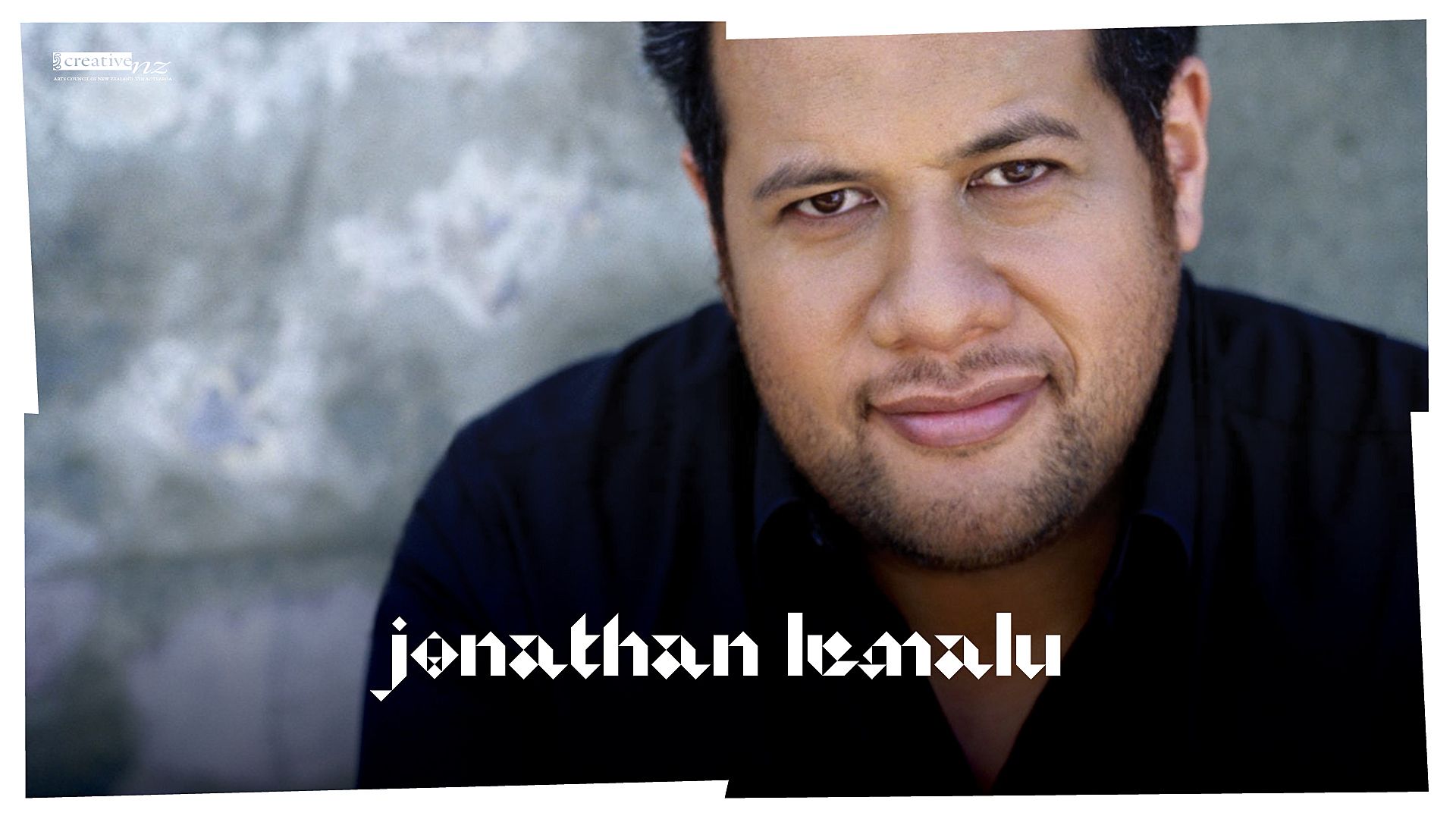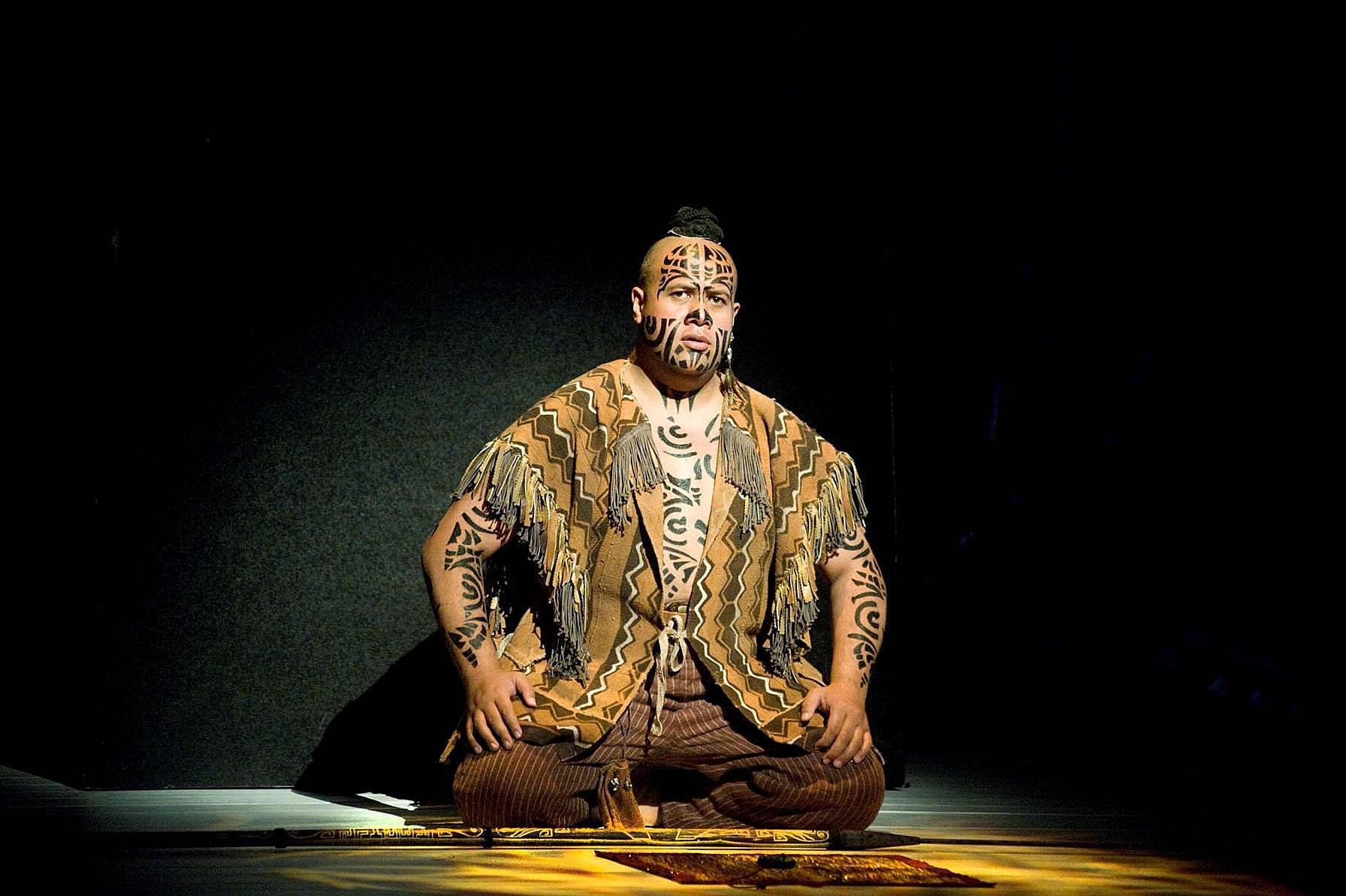Telling Stories in the Universal Language of Music
What do White Sunday performances, Polyfest and New Zealand’s opera scene have in common? London-based bass baritone Jonathan Lemalu shares insight into why Pacific singers have become such a prominent feature of opera in Aotearoa.
We’re collaborating with Creative New Zealand to bring you the groundbreaking Pacific Arts Legacy Project. Curated by Lana Lopesi as project Editor-in-Chief, it’s a foundational history of Pacific arts in Aotearoa as told from the perspective of the artists who were there.
The path for me as a musician began one weekend in Dunedin in 1986, when my parents saw an audition sign for young sopranos at the local choir of St Paul’s Cathedral. Upon successful selection I became the only brown face in the choir, from 1986 until 1999 (my own family church was a Presbyterian one nearby). In the St Paul’s choir, my 13 years of membership – where I was later named as Patron – tutelage, touring and singing lessons formed the foundation of my vocal development and passion for singing with firm, lasting and loyal friendships. Singing was the team sport of choice for me. I revelled in the fun and extremely high standards of music making in New Zealand’s church and choral scene.
In 1999 I began postgraduate vocal studies at London’s Royal College of Music as a Queen Elizabeth the Queen Mother Scholar. This was after international tours with St Paul’s, New Zealand Secondary Schools Choir and National Youth Choir; success in numerous solo singing competitions in Aotearoa and Australia; and fulfilling a promise to my parents of completing a Bachelor of Laws from the University of Otago. I graduated with distinction and the college’s top awards, and have been performing opera freelance ever since. It was here at college in London I met my wife Sandra, a mezzo-soprano, and where we are still based with our two children.
The Dallas Opera, Moby Dick (Queequeg), 2010.
Thirty-four years after that choir-boy audition as a 10-year-old, and with a considerable global career in professional performance spanning more than 25 years, I have a few thoughts on the anomaly of Pacific success in opera. I don’t believe it is a coincidence that, over more than 20 years, a large majority of winners of the premier classical singing competition in Aotearoa – the biannual Lexus Song Quest (the Mobil Song Quest when I won in 1998) – have been Pacific singers. Phillip Rhodes, Aivale Cole, Amitai Pati, Isabella Moore, Benson Wilson and most recently Joel Amosa have all told their unique stories. This points to an interesting and rather dominating 70 percent success rate for Pacific singers in Aotearoa in a historically European art form.
Pacific singers have excelled in school choirs and cultural groups, where they have found a source of camaraderie, family and identity, and a vehicle to champion their talents
Pacific singers have excelled in school choirs and cultural groups, where they have found a source of camaraderie, family and identity, and a vehicle to champion their talents. But it is also a part of our Indigenous DNA, history, language and performance traditions. It’s seen as cool and fun to be involved in these performance practices, and rightly so. Look no further than the enormous success of Polyfest and the recent Te Ata Festival at the New Zealand Festival of the Arts as just two examples of community and cultural pride from regional and national lenses. While so many Pacific singers and musicians over the last 20-plus years have taken their own unique paths to critical acclaim, family, church, school and community seem to be common ingredients in many of their successes.
I believe that what I do as an opera singer is in part an extension of my culture’s oratory and performance practice traditions. Classical music – vocal or instrumental – is storytelling in its simplest and purest form. If I remove the opera-singer tag, I am an entertainer. It is this talent for entertaining and storytelling through words, music and movement that I believe I have inherited through my parents and their heritage.
Like many Indigenous cultures that – in the absence of written archives and printed history – have their history passed on orally in education, family, community and social interactions, it is this underlying thread of storytelling, often through music and song, that holds an even more precious and sacred ideal. From community and early childhood songs, chants and rhymes, White Sunday recitations and other social and cultural representations, it feels like performing and storytelling is in the Pacific DNA.
Whether it’s the stories and teachings of the Bible told in hymns, prayers and community or church life. Whether it’s the communal performance practices of White Sunday, church and social functions, youth groups and Polyfest experiences. Whether it’s the school choir, barbershop and close harmony a cappella groups and their national counterparts that often offer a Polynesian flavour through membership and repertoire. All of these avenues all provide vital performance opportunities in the safety and proximity of our communities, offering a sense of pride and belonging in representing self, school, church, city and country.
it is this underlying thread of storytelling, often through music and song, that holds an even more precious and sacred ideal
From an early age, Pacific youth are performing. Performing for fun, performing for the glory of their religious beliefs, performing for themselves and those around them. And immersion into all of these genres of performance practice chisels self-confidence, moulds skills and harnesses their unique X-factor. The shy, humble, self-deprecating Pacific person – a positive stereotype, in my opinion – becomes capable of flicking a switch to morph into a dynamic, fearless stage animal and entertainer with an infectious smile and affable laugh, familiar and at home onstage in front of others.
I myself have been subconsciously surrounded by examples of storytelling since I was young: Dad speaking as High Chief of our village at weddings, funerals, church ceremonies and meetings; and Mum giving lectures, legislative assessments and government directives for the Pacifica community as former Pacific Island Liaison Officer at Otago Polytechnic. Church sermons, speech competitions, case law in my university studies, radio broadcasts, TV and cinema, physical and audio books, even sports commentary, all exposed me to forms of storytelling.
In a society where so many occupations ask us to conform and fit in with the status quo, it is performance in the arts that supports and champions self-expression, creativity and self-awareness of interpretation within the status quo of genre. It enables people to be comfortable in their own skin. Use the creative conventions of voice and style of your art form and wield it in your own unique way, through your own lens and your own literal and figurative voice. There is no right answer or correct destination. Just tell the story.
Bizet’s Pearl Fishers with Seattle Opera, singing the role of Nourabad. Image supplied.
This was very much the way I was introduced and schooled as a young singer, and how I try to pass on my experiences and knowledge to others as a Professor of Voice at London’s Guildhall School of Music and Drama. My first singing teacher, Honor McKellar, instilled in me the never-ending search for the sound that resonated the essence of the story I was telling. French, German, Italian, Russian, English – the premise was still the same. What sound holds the primal emotion of a moment, a word or story, a character or environment? This is the essence of my job, giving me an ability to communicate a story regardless of the language, or whether an audience understands that language. It’s the gift of telling stories through the universal language of music.
Be it through TV, movies, pop culture, popular music, dance and social media platforms, music and storytelling is a huge part of our daily lives, consciously and subconsciously. I try to see the music in my imagination as much as I hear its sounds. It is this visual storytelling component, like a movie soundtrack or visual vista, that I relate deeply to. This is a contemporary interpretation of a style of music more than 200 years old, and is perhaps an entrance point for new generations of Pacific classical singers to find their voice in this genre.
Valid and varied arguments and hypotheses can be made for Pacific singers having historical, vocal and physiological pedigree for classical and operatic voice. These include:
- Similar linguistic purity of vowels and smooth fluidity of language through consonants assimilating well to bel canto vocal traditions.
- Physical connection and grounding of voice, breath and sound support, not unlike an athletic physicality and coordination, with breath capacity and stamina a prerequisite.
- Many having already experienced another language, such as English as a second language; understanding and empathising with foreign languages and cultures of telling stories.
- Singing as a religious, communal, cultural and social form of communication makes it a naturally heightened and already accessed faculty – opera can be viewed as a heightened by-product of what is inherently and naturally done.
The connection of singing with family, cultural life and values is an important assimilation that also cannot be downplayed. I believe the fact that I began in a church choir was not coincidental, and my commitment of time and energy – five services a week, for no payment, for 13 years – was seen by my parents as a worthy cause of service and praise to God. My parents were hugely influential in the decisions they made, and allowed my sister and I to make our own decisions to choose and follow our paths. For other young Pacific people, the ability to choose for oneself was not a forgone conclusion. I’m enormously grateful and indebted to my parents for supporting and empowering me to follow my dreams, in a career of singing, which is often seen as a glorified hobby.
If I were to name the ingredients necessary for a performer, then luck, timing and people who believe in you cannot be discounted
If I were to name the ingredients necessary for a performer, then luck, timing and people who believe in you cannot be discounted – certainly not in my own career. From family, friends, community, choirmasters, colleagues, sponsors, promoters, conservatories and agents, I have been blessed with so many pivotal people willing to invest time, support and patronage in me. It is also important to have visible and relatable role models in this genre. The late Iosefa Enari was the first Pacific opera singer I became aware of and was a great mentor and advisor. Dame Kiri Te Kanawa remains an inspiration and valued friend. My first interaction with her was when she invited me to her London house for tea on my first Christmas away from home, studying in 1999, as she knew I’d be homesick – a symbolic gesture of kindness and understanding I have never forgotten. As one of the elder statesmen of Pacific opera, I hope I too can be a positive inspiration, and offer kindness and belief to help others to tell their own stories.
CNZ Logo
This piece is published in collaboration with Creative New Zealand as part of the Pacific Arts Legacy Project, an initiative under Creative New Zealand’s Pacific Arts Strategy. Lana Lopesi is Editor-in-Chief of the project.
Series design by Shaun Naufahu, Alt group.
Header photo supplied.




